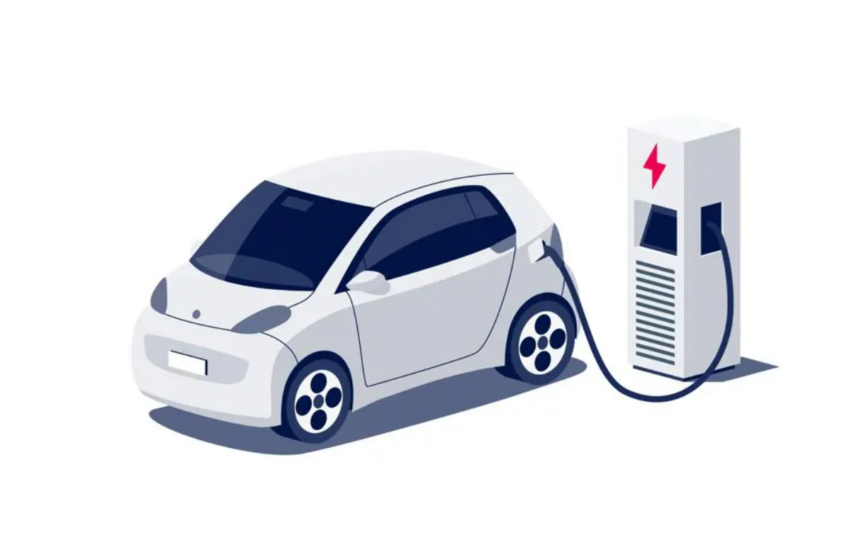As the world moves towards a more sustainable future, electric vehicles (EVs) are gaining significant traction in the automotive market. These innovative vehicles are revolutionizing the way we think about transportation, offering a greener and more efficient alternative to traditional gasoline-powered cars.
The impact of electric vehicles on the automotive market cannot be underestimated. With advancements in technology, EVs are becoming more affordable, with prices expected to drop even further in the coming years. As a result, more and more consumers are considering making the switch to electric, attracted by the environmental benefits and long-term cost savings.
Not only are EVs better for the planet, but they also provide a thrilling driving experience. Electric motors offer instant torque, resulting in swift acceleration and a smooth ride. Additionally, the growing network of charging stations alleviates range anxiety, making EVs a viable option for both city dwellers and long-distance travelers.
As the automotive industry continues to evolve, the rise of electric vehicles is transforming the way we navigate the roads. In this article, we will explore the impact of EVs on the automotive market, examining the benefits, challenges, and potential future developments in this exciting technological shift.
Benefits of Electric Vehicles
The benefits of electric vehicles extend beyond their positive impact on the environment. EVs offer numerous advantages that make them an attractive option for consumers.
First and foremost, electric vehicles are much more environmentally friendly than their gasoline-powered counterparts. They produce zero tailpipe emissions, reducing air pollution and contributing to cleaner air quality. Additionally, EVs have lower greenhouse gas emissions, helping to combat climate change and reduce our dependence on fossil fuels.
Furthermore, electric vehicles offer significant cost savings over time. While the upfront costs of EVs may be higher than traditional cars, the lower operating and maintenance costs make them a more economical choice in the long run. With fewer moving parts and no need for oil changes, EV owners can save on maintenance expenses. Moreover, the cost of electricity is generally lower than gasoline, resulting in lower fueling costs. Even the classic restoration market has benefited from this advancement with EV drivetrain options helping vintage vehicles expand their life instead of going with a full engine rebuild with less than ideal smog conditions.
In addition to the environmental and financial benefits, electric vehicles provide a quieter and smoother driving experience. The absence of a combustion engine means less noise pollution, creating a more serene driving environment. The instant torque of electric motors also provides quick acceleration, delivering a thrilling and responsive ride.
Overall, the benefits of electric vehicles, including environmental sustainability, cost savings, and an enhanced driving experience, make them an appealing choice for consumers looking to transition to a more sustainable mode of transportation.
Growth and Adoption of Electric Vehicles
The growth and adoption of electric vehicles have been remarkable in recent years. As technology advances and EVs become more accessible, consumer interest in electric vehicles is surging.
One of the key factors contributing to the growth of EVs is the increasing affordability of these vehicles. The cost of electric cars has been gradually decreasing, thanks to advancements in battery technology and economies of scale. With more automakers entering the EV market and investing in research and development, prices are expected to continue falling, making electric vehicles more accessible to a wider range of consumers.
Another driver of electric vehicle adoption is the expanding charging infrastructure. As the number of charging stations increases, range anxiety diminishes, making owning an EV a viable option for more people. Governments and private companies are investing in the installation of charging stations in public spaces, workplaces, and residential areas, creating a network that supports EV ownership and usage.
Furthermore, the growing awareness and concern for the environment are motivating consumers to choose electric vehicles over conventional cars. People are more conscious of their carbon footprint and are actively seeking sustainable alternatives. The desire to contribute to a cleaner and greener future is driving the demand for electric vehicles.
Government incentives and policies have also played a significant role in promoting electric vehicle adoption. Many countries offer financial incentives, such as tax credits and rebates, to encourage consumers to purchase electric cars. Additionally, some governments are implementing regulations to phase out gasoline-powered vehicles, further incentivizing the transition to EVs.
The combination of affordability, charging infrastructure, environmental awareness, and government support has resulted in a surge in electric vehicle adoption, with EVs rapidly gaining market share in many countries.
Environmental Impact of Electric Vehicles
One of the primary reasons for the increasing popularity of electric vehicles is their positive environmental impact. EVs offer a greener alternative to traditional gasoline-powered cars, significantly reducing greenhouse gas emissions and air pollution.
Electric vehicles produce zero tailpipe emissions, meaning they do not release any pollutants directly into the air while driving. This is in stark contrast to internal combustion engine vehicles, which emit carbon dioxide, nitrogen oxides, and other harmful pollutants that contribute to smog and climate change.
By transitioning to electric vehicles, we can reduce our dependence on fossil fuels and decrease greenhouse gas emissions. The electricity required to charge EVs can be generated from renewable sources, such as wind, solar, or hydroelectric power, further reducing their carbon footprint. As the world shifts towards cleaner energy sources, the environmental benefits of electric vehicles will only continue to grow.
In addition to reducing greenhouse gas emissions, electric vehicles also help improve air quality. Traditional cars emit pollutants such as nitrogen oxides, particulate matter, and volatile organic compounds, which contribute to respiratory problems and other health issues. By driving electric vehicles, we can reduce these harmful emissions, leading to cleaner and healthier air in our cities and communities.
The environmental impact of electric vehicles extends beyond their operation. The production and disposal of EV batteries do carry environmental concerns. However, advancements in battery technology and recycling initiatives are addressing these issues. As the industry progresses, we can expect further improvements in battery efficiency and sustainability.
Overall, electric vehicles play a crucial role in mitigating climate change, reducing air pollution, and creating a more sustainable future. By embracing EVs, we can contribute to a cleaner and healthier planet for future generations.
Electric Vehicle Charging Infrastructure
The expansion of the electric vehicle charging infrastructure is crucial for the widespread adoption of electric vehicles. As the number of EVs on the roads increases, the availability of charging stations needs to keep pace to ensure convenience and accessibility for EV owners.
Charging infrastructure includes various types of charging stations, ranging from slow chargers to fast chargers. Slow chargers, also known as Level 1 chargers, are typically used at home and provide a lower charging rate, suited for overnight charging. Fast chargers, or Level 2 chargers, offer a higher charging rate and are commonly found in public spaces, workplaces, and residential areas. These chargers can charge an electric vehicle much faster than Level 1 chargers, reducing charging times significantly.
Fast chargers are especially important for long-distance travel and reducing range anxiety. They enable EV owners to charge their vehicles quickly during pit stops, providing the convenience required for long journeys. Fast-charging infrastructure is crucial for the widespread adoption of electric vehicles and the growth of the electric mobility ecosystem.
In addition to Level 1 and Level 2 chargers, there are also fast-charging stations known as DC fast chargers or Level 3 chargers. These chargers provide an even higher charging rate, allowing electric vehicles to charge up to 80% in a relatively short amount of time. DC fast chargers are typically found along major highways and are essential for long-distance travel and intercity charging.
The expansion of the charging infrastructure requires collaboration between governments, private companies, and utility providers. Governments need to invest in the installation of charging stations in public spaces and provide incentives for the private sector to invest in charging infrastructure. Utility providers play a crucial role in ensuring the availability of sufficient power supply to meet the growing demand for electric vehicle charging.
The future of the charging infrastructure lies in the development of ultra-fast charging technologies. These technologies aim to charge electric vehicles at even higher rates, reducing charging times to a few minutes. Ultra-fast charging stations will enable EV owners to charge their vehicles as quickly as refueling a traditional car, further enhancing the convenience and practicality of electric vehicles.
Overall, the expansion of the charging infrastructure is essential for the continued growth of electric vehicles. As technology advances and the number of EVs on the roads increases, we can expect to see a more
Revolutionizing the Road: The Impact of Electric Vehicles on the Automotive Market Introduction
Reading Time: 5 minutes
Last modified: January 11, 2024








